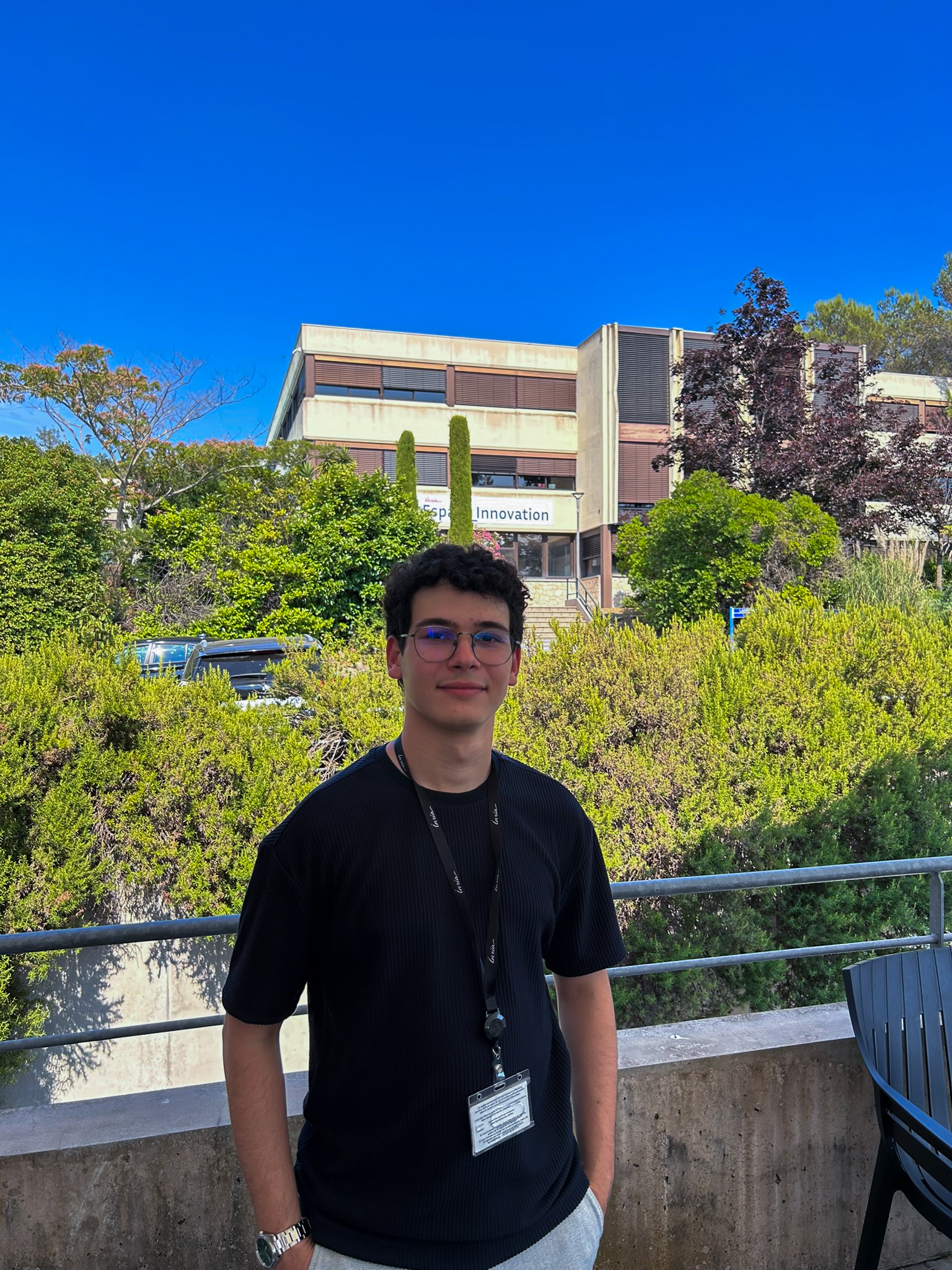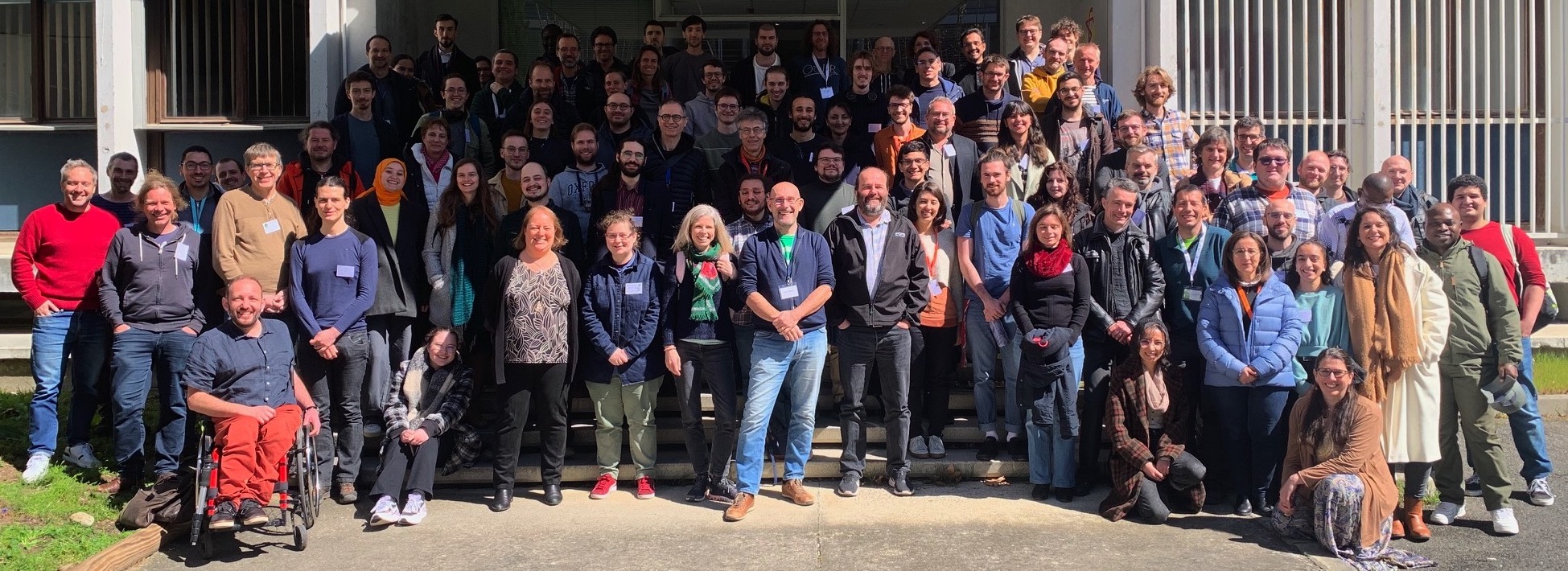#5 Portrait – Yassir Amami
Publié le

Science in Focus
The Poster Winners
for the NAI Project
#5
______________________
AMAMI
Yassir
Centre INRIA d’Université Côte d’Azur
Sophia Antipolis
Advisors: Chadi Barakat and Thierry Turletti
During the annual PEPR Future Networks Days at Enseirb-MATMECA in Bordeaux, PhD students and postdoctoral researchers from the projects presented their research work to the community. A best poster competition was held, awarding one winner per targeted project. This series, « Science in Focus – The Poster Winners », aims to highlight the work of the winning doctoral students.
Discover the fifth portrait of our « Science in Focus – The Poster Winners » series: Yassir AMAMI from NAI project
Academic and personal journey
From a young age, I was drawn to understanding how things work. I loved dismantling devices, experimenting with robots, and later, exploring programming. Encouraged by my father, a university professor in physics, I was exposed early on to the world of scientific inquiry and even attended many PhD defenses as a child. This planted the seed of curiosity that has guided me ever since.
After earning my engineering degree in computer science, I was fortunate to be selected for a double-degree program, allowing me to simultaneously complete a Master’s in Ubiquitous Networking and Computer Science in France. While I appreciated the engineering curriculum, I realized that routine tasks weren’t for me. I’m most fulfilled when tackling complex problems at the edge of current knowledge. That’s what led me to pursue a PhD: a natural continuation of my desire to explore, innovate, and potentially follow in my father’s footsteps as a researcher.
Thesis and research project
With the rise of open, virtualized, and cloud-native 5G networks, traditional monitoring tools are falling behind. Most were not designed with 5G in mind, and even fewer are suited for open architectures deployed across dynamic cloud environments. This creates a major visibility gap, especially when trying to understand performance at the level of individual network slices or respond quickly to emerging issues.
My research addresses this challenge by designing a flexible, dynamic, and slice-aware monitoring framework tailored to the unique characteristics of open 5G. Rather than continuously running heavyweight tools, the framework adapts to the network’s state: it activates targeted, lightweight monitoring probes only when needed, and removes them when conditions are stable, reducing overhead while preserving visibility. The focus is on identifying the most meaningful performance metrics and exploring efficient, adaptive mechanisms to extract them. As a first step, I investigate technologies like eBPF, which enable low-impact, in-kernel data collection.This approach supports many goals on different levels. It advances the field of programmable observability by showing how monitoring can be dynamic, context-aware, and resource-efficient. And it contributes to the reliability and trustworthiness of 5G-powered services, from autonomous mobility to digital health, by ensuring that the networks behind them can be monitored intelligently, without compromising performance.
PEPR and you!
What the PEPR environment and the exchanges with the communities during the 2025 days have brought you?
The PEPR Environnement event was a refreshing break from the usual day-to-day of PhD work. What stood out most to me was the intellectual alignment with people working on similar technical challenges, yet coming at them from different angles or domains. These exchanges weren’t just rich but also practically useful, helping us spot overlooked connections between different parts of the project.
In particular, I had the chance to engage with researchers from other work packages, which helped bridge gaps and initiate concrete collaborations that wouldn’t have happened through documents or meetings alone. It made me realize that even in a large, distributed project, there’s a lot of untapped synergy, and these in-person moments are key to activating it.
More broadly, the event gave me new ideas for where my own work could go next, and sharpened my awareness of the bigger picture behind the technical contributions. It was less about formal presentations and more about uncovering shared problems, fresh angles, and potential next steps.
Vision and future
What are your expectations for after your postdoc?
After my thesis, I hope to continue working on high-impact, research-driven projects ideally at the intersection of systems engineering, observability, and emerging network technologies. Whether in academia, industry R&D, or a hybrid environment, I’m looking for a role that allows me to keep tackling complex technical problems while contributing to something meaningful. I’m especially drawn to environments that value both exploration and concrete application.
Finally, what would you say to future doctoral candidates?
To future doctoral candidates, I would say: be ready to embrace uncertainty, and don’t expect a straight path, but if you’re curious, driven, and willing to dig deep, a PhD can be one of the most rewarding intellectual journeys. Take time to connect with others, stay open to shifting perspectives, and don’t underestimate how much you’re growing, even when progress feels slow. Most importantly, make the research yours.
Yassir Amami’s poster for NAI project
Plus d'actualités Actualité


